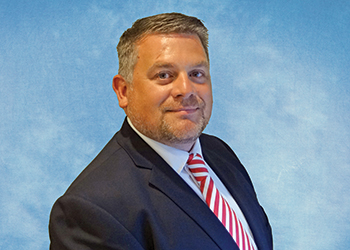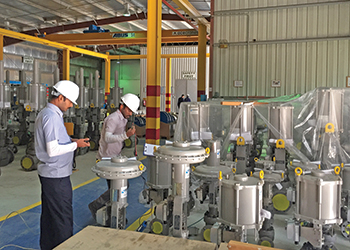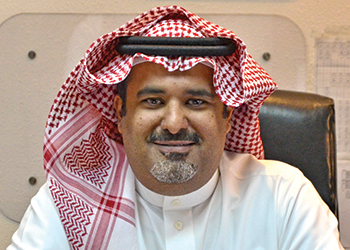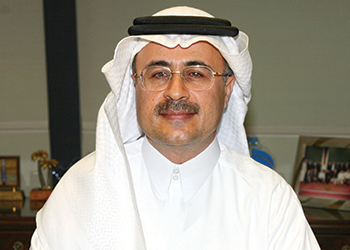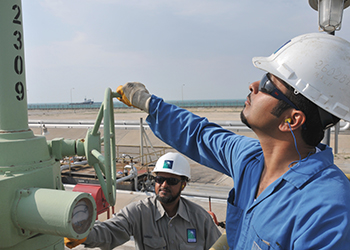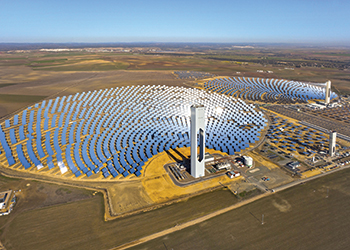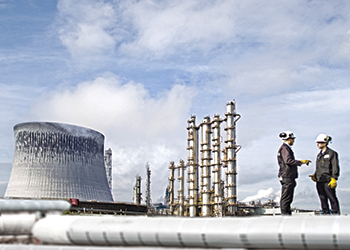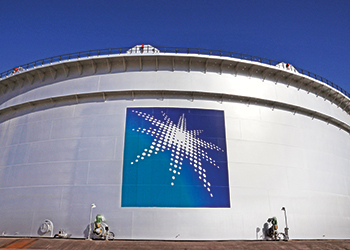
 Simonelli at the MEOS plenary session
Simonelli at the MEOS plenary session
Leaders need to be able to harness disruption, and even instigate it. In order to be disruptive, one needs to adopt a new mindset that challenges the status quo and do something entirely different to provide the market with new, valuable solutions
Industries need to be disruptive, when legacy structures change and industries transform for the better, stressed Lorenzo Simonelli, President and CEO of GE Oil & Gas.
"Disruption is happening to us, and we need to turn the tables… So, leaders need to be able to harness it, and even instigate disruption. We believe that in order to be disruptive, you need to adopt a new mindset that challenges the status quo and do something entirely different to provide the market with new, valuable solutions," he said speaking on the topic ‘Transforming the Industry’ at the high level executive plenary session of MEOS 2017.
Simonelli said the global demand for affordable and reliable energy will continue to grow. The world has been through the downturn now for long enough to understand the need for change to compete. What is needed now, is to truly harness the power of the Industrial Internet, and lead the digital transformation of the industry.
There are a lot of analyses out there but there are some consistent trends and viewpoints that many of those concerned can agree on (across all the segments of the industry-from up, mid to downstream).
They include technology breakthroughs and innovation, which are the key to success leading to efficiency improvements in a cash constrained environment. As the world transitions to a lower carbon system in the longer term, companies in the oil and gas sector need to reconsider their portfolio and related capabilities to not only survive, but thrive, in this new future. Collaboration is a must. Never has there been as much openness and, frankly, acknowledgement of the opportunities that come with enhanced collaboration. Ther is also the shift in economic power impacting the relative balance of demand between current established markets and developing markets.
"So, how do we- together- transform the oil and gas industry?" he asked.
This is where the need to be disruptive arises, he said adding: "We see opportunities for testing and disruption in three areas."
Disrupting the old-way of customer-vendor relationship: The old relationship between operator and original equipment manufacturer isn’t working anymore. Today, instead of developing solutions in isolation, why not innovate in close collaboration with customers? This involves sharing design concepts, testing, failing fast and learning together, a process GE calls FastWorks.
"In this way, we can foster a relationship of mutual trust and respect that drives long-term value for both parties. An example of this in action, you may have read or heard about our partnership with Technip to develop digital solutions aimed at maximum productivity and reliability improvements at LNG facilities. We have some other great programmes, like that with BP, where we are working to help reduce downtime, improve efficiency, reliability and safety in their offshore operations. Collaboration and relationships are also transforming at the local level.
Localisation is "incredibly important", and for a multinational like GE, it can be a strategy for growth and positive impact in the world, said Simonelli.
GE’s philosophy is that localisation strategies are worth investing in. This thinking has seen the complexity of supply chains reduced, costs of transporting parts decreased and the creation of jobs having a positive impact on local economies, said Simonelli in his address.
"For us, localisation means not only investing in local economies through manufacturing, but also developing local skills and capabilities. For example, several years ago we opened a business process outsourcing centre in Saudi Arabia that will employ 3,000 women and is led by a great female leader. Our vision was to tap into a pool of talented Saudi women to execute process support for our activities in 50 countries. The centre is growing and competing globally."
It is important also to build up a reliable and aligned supply chain. For example, last year, more than 300 business leaders from over 20 countries convened in Riyadh for the Global Supplier Forum by GE held with the support of Deputy Crown Prince Mohammed bin Salman, he said.
Simonelli said that across the private sector, more capital will find more opportunities, speeding up innovations in science, digital technology and other fields. It’s also about meeting local demand, raising economies and upskilling workforce to meet in-country needs.
Disrupting traditional product development: By introducing smarter and more cost-effective hardware and software technologies and breaking the mould on the way they are manufactured. The future is here and it is: robotics, additive and automation at work. One shining example of this innovative approach to engineering and manufacturing is GE’s newest aero-derivative gas turbine—the LM9000. Transferring technology development has disrupted how GE designs and manufactures the newest products. For this newest product, GE put additive manufacturing to work and borrowed some expertise from its aviation business to deliver a new product for LNG off and onshore that can achieve -- 20 per cent more power in the same footprint, 40 per cent lower NOx emissions and a 50 per cent longer maintenance interval!
"For 125 years, GE has delivered innovations in industrial sectors from aviation to transportation. In that sense, you are just seeing the beginning of what we can do for the oil and gas industry. We believe in partnering closely with customers, suppliers, even competitors at times to test and accelerate innovation," he said.
At GE’s Oil & Gas Technology Centre in Oklahoma, it has two test wells representing real world conditions that can test all kinds of downhole technologies with its customers. The centre is equipped to simulate and replicate actual downhole conditions, meaning faster prototyping and iterating… speeding innovation directly with operators. Then in these test wells one can play with pressure, temperature and other real-world operating conditions to test a variety of use cases.
Another collaboration brings together cutting-edge technologies to offer predictive maintenance and performance improvements at its R&D centre. There GE is investigating potential emission monitoring capabilities, such as VOC, CO, O2, H2S, and methane. The company has developed a prototype drone that can be used to help detect methane near oilfield equipment, such as pipes, wellhead valves, gas processing plants, allowing operators to mitigate the problem.
GE partnered with Oklahoma State University’s Aerospace programme and is now piloting the technology with Southwestern and other customers.
"Our industry has been affected by change. I know my panellists and the industry – operators and solutions companies alike – are rallying around these same themes. Transformation helps the industry overall take bigger steps forward," he says.
And finally, Disruption in collaborations in technology and development, and most importantly in digital will provide meaningful insights to help operators predict and accurately diagnose issues and respond before failure, as well as, optimise maintenance strategies across enterprises for greater operational efficiency. That kind of change is truly transformative, he affirms.
The best companies are harnessing change to their benefit, and taking control of a volatile situation. GE believes that resilience, innovation and collaboration will pave that road to recovery, Simonelli adds.




















































































